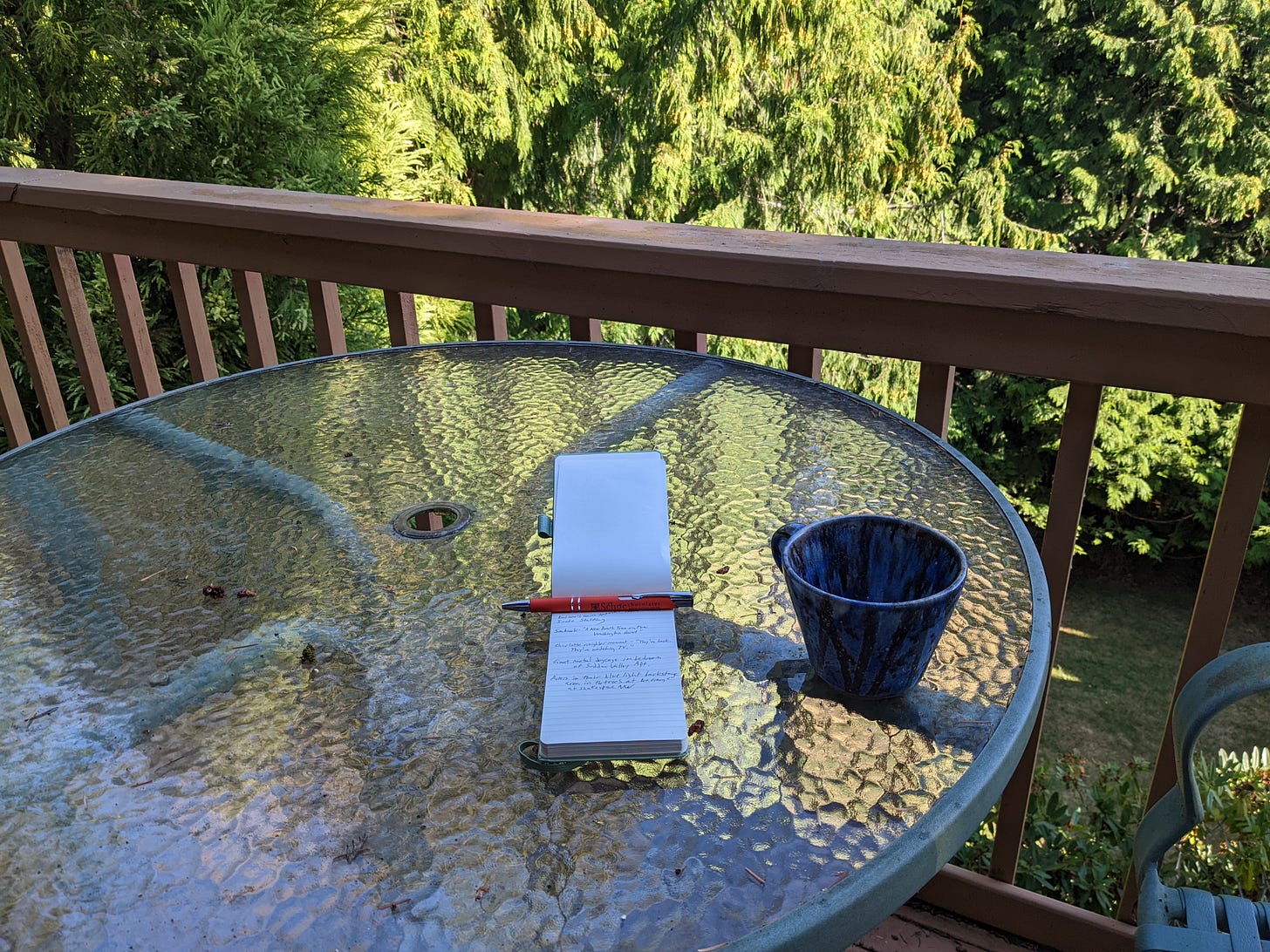I’m going to leave the intro from TT #1 pinned here for new readers. For today’s new post, scroll down below the photo:
These should be fairly self-explanatory. They’re not formulas or, God knows, rules. They’re exercises to try, and ways of framing, and maybe challenges that will lead you to solutions to the individual problems your writing projects are already plotting to hurl at you. All of these are things I’ve developed (or borrowed and augmented) over the last quarter-century, and that at least some people have found useful.
If you find these helpful, and want to show appreciation or encouragement, please do tell friends, or say so somewhere. And/or click the little purple button below, if you’re able and so inclined. Many thanks.
Technique Tuesday #3
More tricks today for staying objective as a means of overwhelming your reader with sensation or emotion:
At the end of last week, I mentioned the utility of verbs. It bears restating. They are the most versatile shading tool you have for coloring in moments. The object is not to show off your vocabulary or pick the most surprising verb. Just get the right one, that communicates precisely what is happening. Often, nothing else will be required, because we all know what trembling, or breezing, or kissing, or submerging looks and sounds and feels like. Therefore, we will feel those things right along with your characters.
Here are a few more tools I’ve found consistently helpful in immersing readers:
You have many senses. Use them.
Painting a picture is fine. Great. But the brush isn’t even your pen’s most useful function. If you can get the tase or feel or sound of something right, your scenes will spring as if via pop-up book right off the page.
Most evocative sense, by far? (This isn’t my subjective opinion; it’s neuroscience.)
That would be smell.
Why?
Because in your brain, smell is coiled around memory. Which is why a whiff of those blueberry-scented magic markers will catapult me, every time, back to first grade. I can’t tell you what I had for breakfast yesterday— well, actually, I can, but my egg poaching was particularly masterful yesterday, so it’s not a fair test—but wave one of those markers under my nose, and I not only can picture my desk in that room under the weird construction-paper turkey stapled to the cork board, I can tell you the names of the kids sitting and scrawling on either side of me. Neither of whom have crossed my path since. I can also tell what they were drawing. And that Philip always had carrots coated in some sort of mustard something in his pen bag, not his lunch box.
There’s a reason that what sets Proust off is the aroma of a cookie dipped in tea.
Subjective language in dialogue still counts as staying objective.
Consider this the literary equivalent of the reaction shot in a movie. Often, you won’t need it. But another way of not just cluing in readers to the tenor of a moment but helping them experience it is to have a character we have come to know be impacted, and express that.
But O Self-Appointed Oracle Glen, isn’t that cheating? Pretending it’s someone else saying, “Oh, God, that’s so awful…” (or beautiful, or whatever…), when really it’s you?
Why no, most beloved and valued visitors, it is not. You aren’t making the declaration. You are simply reporting what happened.
Metaphors and similes are also your friends. Sometimes.
This is a whole other post. Probably several. For today, let’s just say that when necessary, and used well, the right comparison or juxtaposition can add whole new layers of emotion and effect to whatever you’re portraying. Just make sure that your metaphor actually brings something new, instead of merely restating, and is also fresh, and is also appropriate to the frame of reference your characters or authorial voice is using.
You know, easy-peasy.
An Exercise:
Want to try this out? Here’s a little practice you might find helpful for honing this skill:
Pick a moment of the week that you associate with a particular feeling. Could be Monday morning, eight minutes after the alarm goes off. Could be the site of your pet (or kid, or whatever) in the window as you come home. Could be anything.
The game is this:
Make a list of every tactile detail you can that occurs during that moment. Every smell, sound, etc.
Then, using only the most helpful details from that list, paint a picture of that moment in completely objective language that nevertheless communicates the flavor (or flavors) of the moment.
As always, hope this helps.

